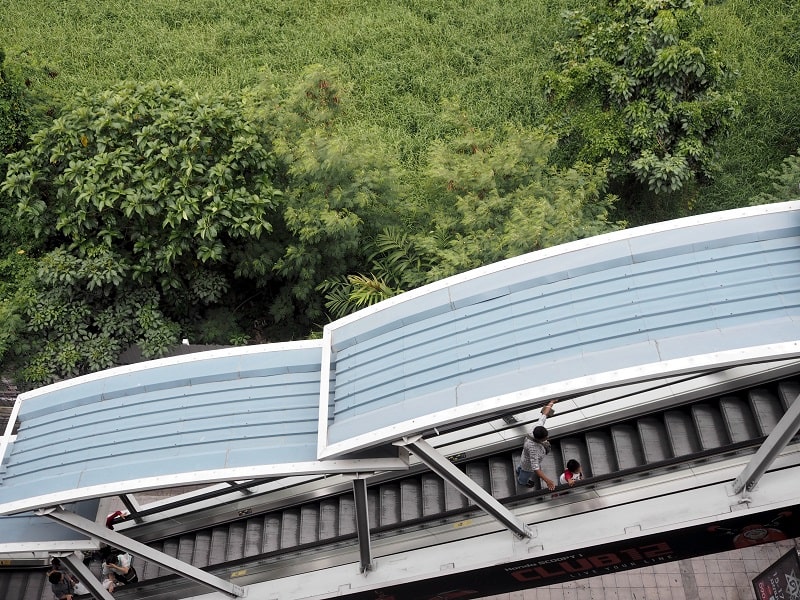Bifacial solar panels
When it comes to solar panel installation, the objective is to always create a system that produces as much solar energy as feasible. Solar panel technology has advanced significantly. Bifacial solar panels are one innovative technology that is very fascinating. Although bifacial modules have been present since the 1960s, they have recently disrupted the solar PV industry thanks to the emergence of PERC (Passivated Emitter Rear Cell) technology. What exactly are bifacial solar panels, and why should you consider them? Find out by reading on!
Monocrystalline or polycrystalline cells are the two types of crystalline cells that make up solar PV panels. Monocrystalline cells make up most bifacial solar panels. Despite being more costly, monocrystalline cells are more effective. Bifacial solar panels use identical solar cells as monofacial solar panels. The panel's construction is the sole significant variation. Bifacial solar panels keep the solar cells in place using two panes of glass or a reflecting back, as opposed to conventional monofacial solar panels' opaque back sheet, exposing the solar cells to sunlight from both the front and the back. Bifacial solar panels are therefore more effective since they can collect sunlight from both sides. They are often frameless and devoid of metal gridlines since they are designed to be fully transparent. As a result, they have more structural integrity and are easier to look at.
Like regular solar panels, bifacial solar panels operate the same. A portion of the sun's energy is directly absorbed by solar cells and used to create electricity. Along with a part of captured sunlight that bounces around within the glass before being absorbed by a solar cell. Finally, there is a small amount of light that just goes through. Bifacial and monofacial panels, however, differ in this regard. This lost light in a bifacial panel then has a chance to be reabsorbed by the panel. The light in this case bounces back towards the panels to be turned into solar energy when it goes straight through and strikes a highly reflecting surface.

When placed next to highly reflecting surfaces, bifacial solar panels operate at their optimum. For instance, glass swimming pools, sand, stone, or snowy terrain. Some bifacial variants can increase energy output by up to 30% even if the front of the panel still absorbs most of the sunlight. The atmosphere around the solar panels themselves will determine just how much extra energy is generated.
Due to their accessibility and effectiveness, bifacial solar panels are becoming more and more well-liked. To enjoy the benefits, more households and businesses are installing bifacial rather than monofacial panels, but do the benefits outweigh the drawbacks? Let us display a just a few pros:
Enhanced effectiveness. Energy generation is increased overall because bifacial modules may generate electricity from both sides of the panel. Bifacial solar panels, according to certain manufacturers, may produce up to 30% more energy than traditional monofacial solar panels. Homeowners can install fewer panels to satisfy their demands since the improved efficiency requires less area per watt.
Pleasant to the eye. Frameless bifacial modules are one of several different designs. Compared to monofacial solar panels, many people find the entire glass frame to be more aesthetically beautiful.
Extended warranties. An extended warranty of up to 30 years is frequently offered with bifacial solar panels.
Effective in diffuse Light. Bifacial panels function better in diffuse light due to the additional surface area, decreasing the overall expenses compared to monofacial panels.

More robust. Bifacial panels are frequently more durable since they have tempered glass on both sides and are frameless. The tempered glass can survive high temperatures and powerful winds in addition to being UV and weather-resistant. Bifacial solar panels are anticipated to last longer due to their resilience.
However, several disadvantages are needed to be drawn out too.
Initial expenses. Bifacial solar panels might cost up to 10% more than monofacial solar panels because of the manufacturing process.
Installment fees. The installation costs are greater for bifacial solar panels since they are usually larger and need specialized equipment to get their full benefits.
Bifacial solar panels are now available on the world’s market from several manufacturers. The companies LG, Canadian Solar, Longi, Trina Solar, and Yingli Solar are currently producing bifacial products. But as bifacial modules gain more acceptance, we anticipate that this number will climb.
